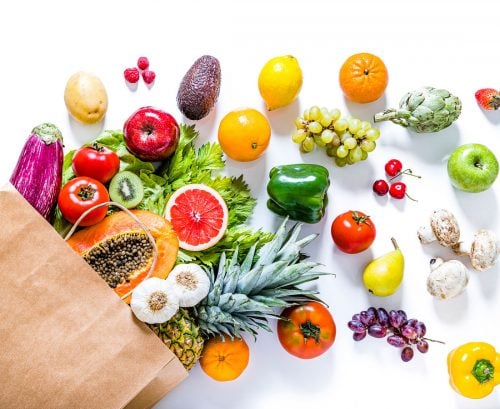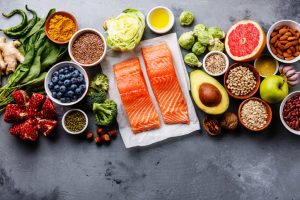Everyone knows the importance of a diet rich in healthy fruits and vegetables. Most people do not eat enough of these important foodstuffs, and increasing your consumption of fruits and vegetables is probably the single most effective thing you can do to improve your overall health. Eating enough fruits and vegetables does not need to be chore. After all, fruits and vegetables are delicious, easy to buy and easy to use.
In addition, fruits and vegetables are rich sources of antioxidants, which are though to play an important role in maintaining good health. Antioxidants have been studied for their effectiveness at preventing cancer, heart disease and even reversing the signs of aging. In addition, fruits and vegetables are excellent source of trace elements and other micronutrients. These important elements are not available in any vitamin pill; they must be obtained from the daily diet.
Tips for choosing the best fruits and vegetables
- When possible, choose fresh fruits possible. Fresh fruits and vegetables may contain more nutrients than frozen or dried varieties.
- Even though fresh is best, frozen and canned vegetables are great for out of season varieties. When buying canned fruits, avoid those packed in syrup and opt for those packed in water or juice.
- Choose fruits and vegetables in a variety of colors. Not only are bright, colorful fruits more attractive, but the different colors indicate different types and amounts of nutrients. For instance, yellow and orange fruits and vegetables are good sources of beta carotene, while dark green leafy vegetables are rich in vitamin C and calcium.
- Be careful when cooking vegetables. A quick steam in the microwave with minimal water added is the best way to prevent loss of nutrients when cooking.
- Keep your vegetables healthy by adding minimal butter, margarine and oil. Most vegetables can be flavored using a stock, a low fat yogurt or fresh fruit pieces.
Understanding portion sizes
We have all heard the government recommendations that we eat 5 to 10 servings of fruits and vegetables per day. This talk of servings and portions can sometimes be confusing, so let’s take a look at just what a serving consists of.
A serving of a fruit or vegetable can be:
- A medium sized piece of fruit, such as an apple, banana or orange
- One large slice of a fruit like a cantaloupe, melon or pineapple
- Two pieces of small fruit, such as a kiwi fruit or plum
- One cup of strawberries, raspberries or grapes
- One half cup of fresh fruit salad
- One half cup of stewed or canned fruit
- One quarter cup of dried fruit
- One half cup of 100% pure fruit juice
- One half cup of cooked, canned or frozen vegetables
- One side salad
Unlike with many other types of foods, more is better when it comes to fruits and vegetables. When planning and preparing meals, it is important to plan ahead and include as many servings of fruits and vegetables as possible. Proper meal planning and shopping are the best ways to meet the five a day minimum recommendation for fruit and vegetable consumption.
Some tips for healthier living
- Stock the fridge with healthy snacks like celery sticks and carrots
- Keep a bowl of fruit, stocked with healthy attractive fruits like oranges, apples and bananas, on the kitchen counter and dining room table
- Drink a glass of 100% pure apple, orange or grapefruit juice every morning
- Warm up a cold day with a steaming bowl of vegetable soup
- Eat at least one salad every day. Experiment with different salad additions, like broccoli, sprouts, carrots and green peppers.
- Snack on fruits like apples and oranges. Dried fruits like apricots and raisins also make handy and nutritious snacks
- Add sprouts, cucumbers, lettuce and tomatoes to sandwiches for extra variety
- Garnish meals with chopped or grated carrots
- Strive for at least two servings of vegetables at each evening meal
- Use your creativity to create exciting vegetable stir fries for family and friends
- Spice up the grill with vegetable and fruit kebobs
- Use baked apples and pears as great low calorie desserts
- Add vegetables like carrots, cabbage, onions, lentils and peas to soups, stews and casseroles.





